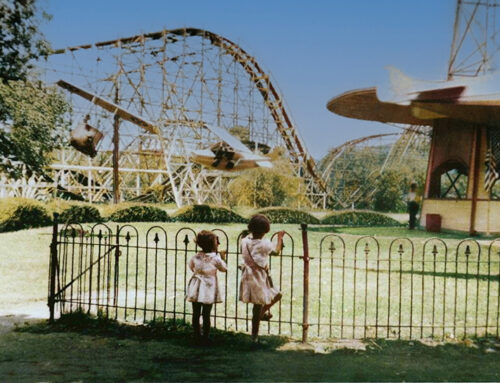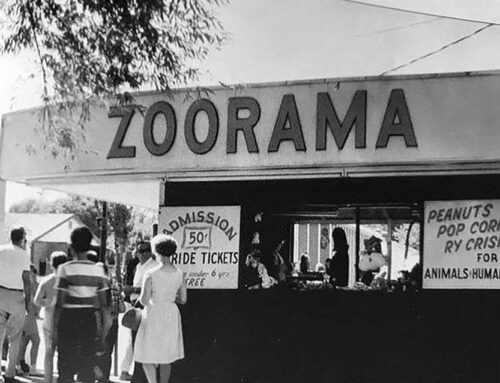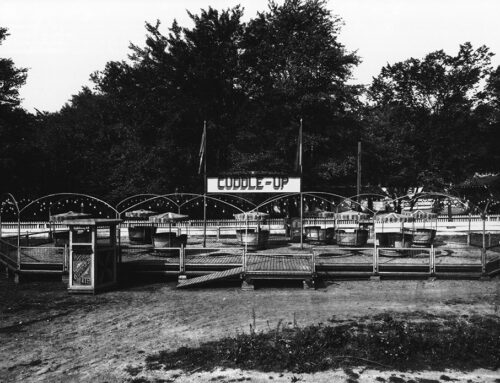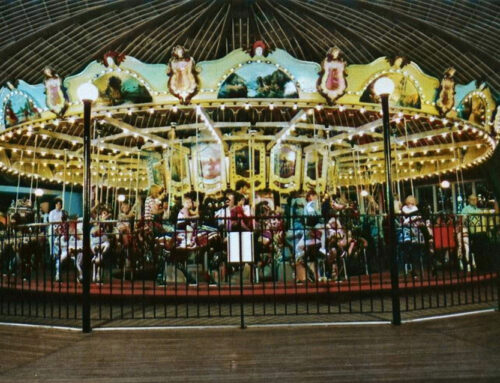One of the most iconic and beloved rides in Dorney Park’s history was Journey to the Center of the Earth, a dark water ride that combined classic thrills with imaginative storytelling. But before it became the famous underground adventure, the ride had humbler beginnings. In 1927, Dorney Park introduced Mill Chute, a ride built by the Philadelphia Toboggan Company. It was a mix of an old mill-style dark ride and a shoot-the-chutes water ride, where guests floated in small boats through dark tunnels before climbing a lift hill and plunging into a splashdown finale. For decades, Mill Chute was a favorite, sitting right next to the park’s wooden coaster, and serving as both a family ride and a way to cool off on hot summer days.
Below: Dorney Park Mill Chute Ride.


By the late 1950s, though, Mill Chute was showing its age. Around this time, the theme park industry was changing, especially after Disneyland opened in 1955 and redefined what an amusement park could be. Dorney Park wanted to bring new life to Mill Chute, and to do that, they turned to famed theme designer Bill Tracy, known for creating elaborate and spooky dark ride sets. In 1960, Mill Chute was completely transformed and reopened as Journey to the Center of the Earth, inspired by Jules Verne’s famous 1864 science fiction novel.
The transformation was dramatic. Outside, the ride now had a towering rocky facade covered in jagged stalactites and flowing lava, topped with a terrifying, winged dinosaur-like creature with glowing red eyes that stared out over the midway. At night, this monster lit up the park, drawing guests toward the mysterious entrance. Once aboard, riders floated into dark caverns filled with eerie sounds and strange, glowing creatures inspired by Verne’s vision of a world beneath the Earth’s surface. After navigating the shadowy tunnels, guests climbed a creaky chain lift and plunged down a thrilling drop that sent water splashing everywhere.


Throughout the 1960s and ’70s, Journey to the Center of the Earth was one of Dorney Park’s most popular rides — a unique mix of dark ride storytelling and water ride excitement that you couldn’t find anywhere else. But as time passed, the ride began to age again. In the 1980s, as Dorney Park celebrated its 100th anniversary, the ride received a major renovation. The facade was updated to feature a cooler, icy blue cave theme instead of the original volcanic look. The inside scenes were reworked too — shifting away from Jules Verne’s story and focusing more on creepy and spooky encounters. Riders floated past a giant spider, trolls playing cards, a reptilian monster lurking in the shadows, and even a scene of monsters preparing a gruesome meal. Though the figures inside were simple and didn’t move much, the dark, dripping tunnels, combined with eerie lighting and sound effects, created a memorable, slightly terrifying experience. And of course, the ride still ended with its signature splashdown, thrilling guests right to the end.

Sadly, by 1992, after more than 30 years as Journey to the Center of the Earth, and even longer as Mill Chute, the ride quietly closed for good. Dorney Park had just been purchased by Cedar Fair, and with new ownership came new priorities. Park officials said the ride was too costly to maintain, its parts were impossible to replace, and its low capacity didn’t fit with the park’s growing crowds. Without any farewell or official announcement, the last riders unknowingly took their final journey through the dark tunnels that year. Fans were heartbroken. Many remembered the ride’s spooky ambiance, its signature smell, and the mix of excitement and mystery that defined every trip into the earth’s depths.

Though it’s long gone, Journey to the Center of the Earth remains one of the most cherished rides in Dorney Park’s history — a symbol of a time when parks used imagination and atmosphere to create adventures that lived on in the memories of those who rode them. And while the boats and monsters may be gone, the story of Journey to the Center of the Earth still echoes through Dorney Park’s past.






Leave A Comment